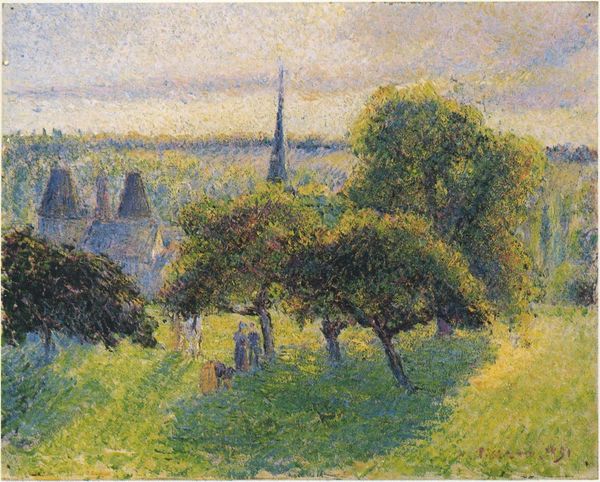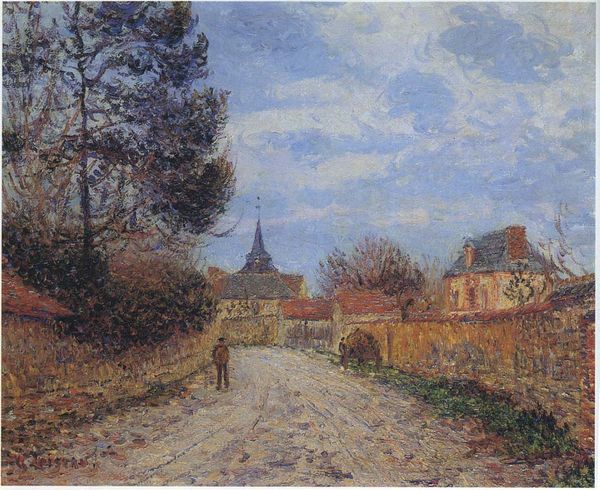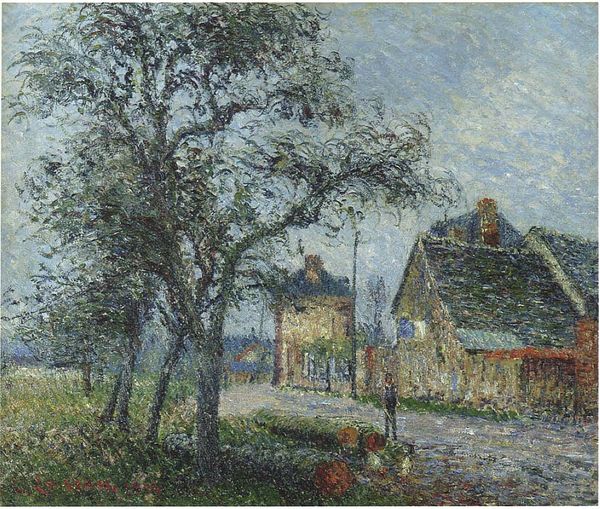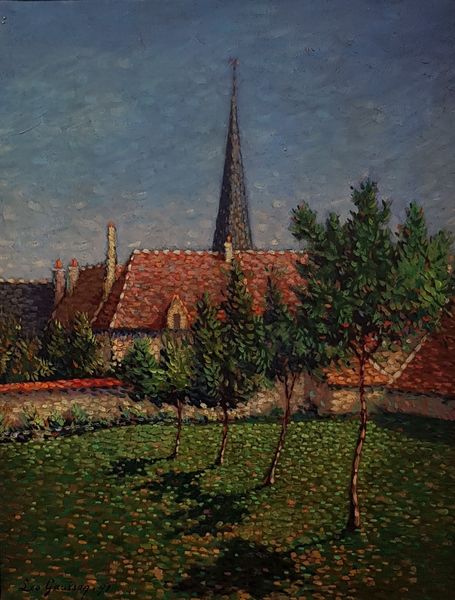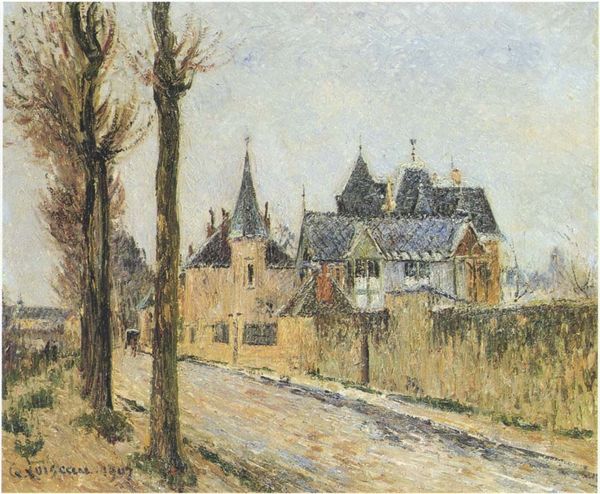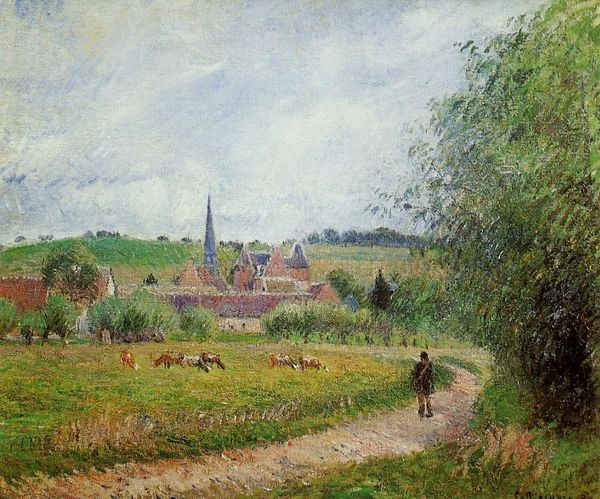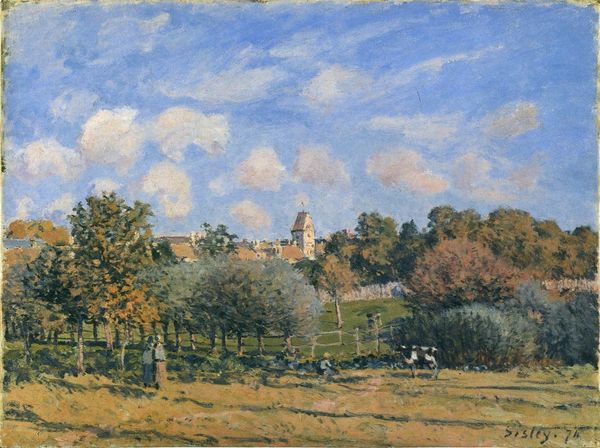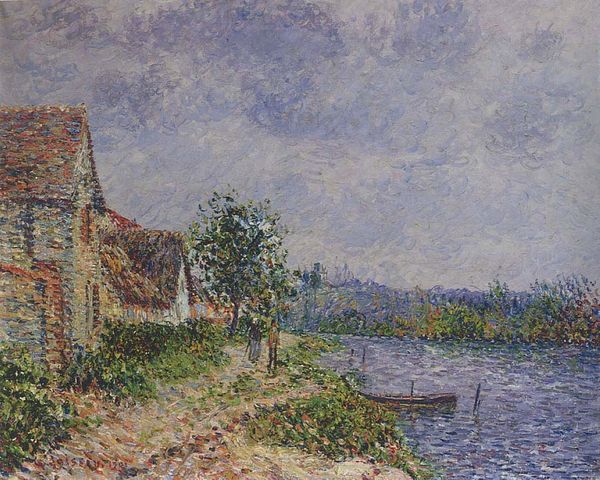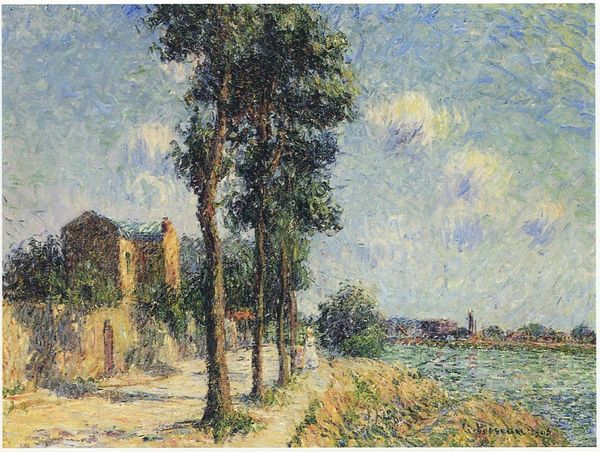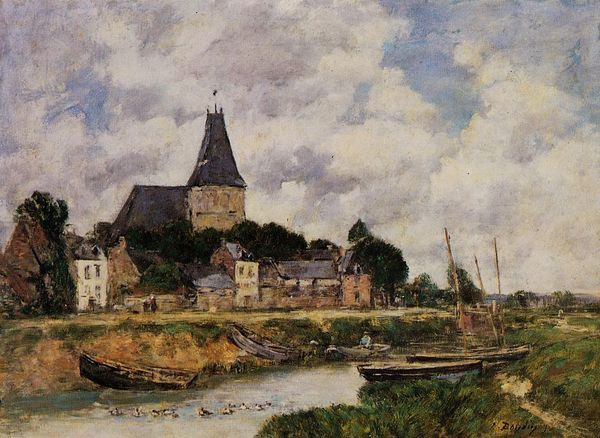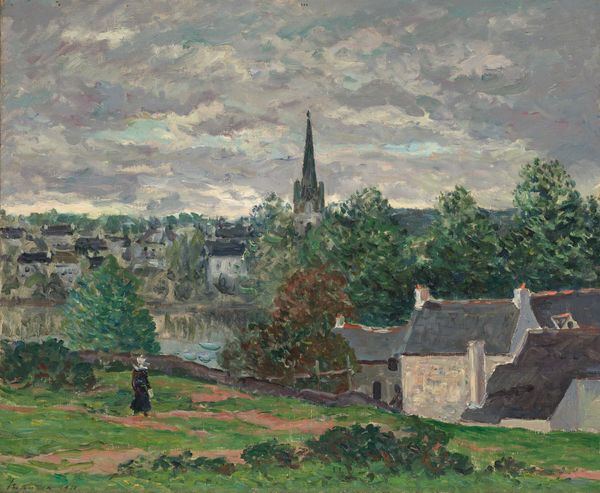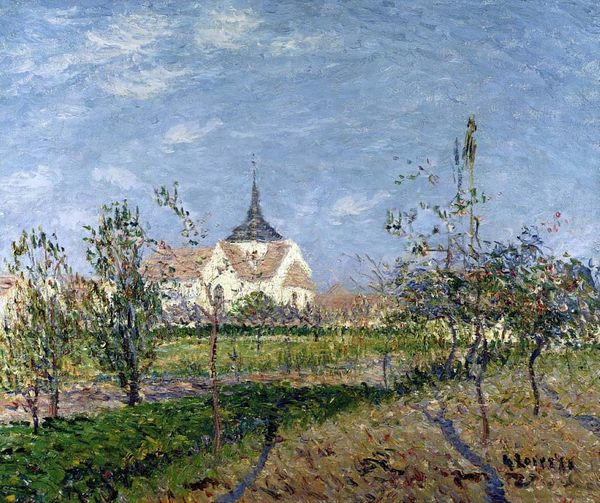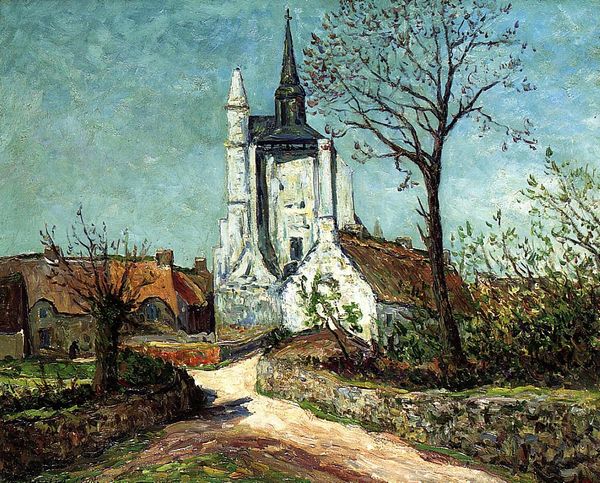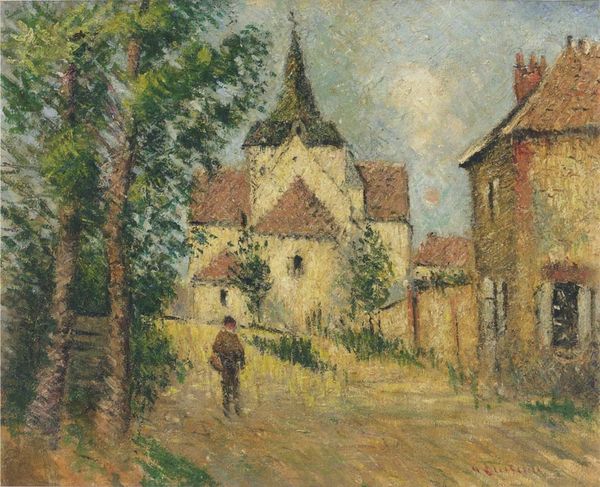
Copyright: Public domain
Notre Dame de la Clarté was painted by Gustave Loiseau, using oil paint, likely en plein air, meaning in the open air, directly in front of the subject. Look closely, and you can see how Loiseau applied the paint in short, deliberate strokes. This technique, characteristic of Impressionism, captures the fleeting effects of light and atmosphere. The texture of the brushstrokes is quite evident, giving the surface a lively, almost tactile quality. The choice of oil paint, a medium that allows for layering and blending, is important here. Loiseau used it to build up the image gradually, capturing the subtle variations in color and tone. This meticulous process reflects a broader cultural shift towards valuing individual expression and the artist's personal interpretation of the world. In contrast to the smooth, polished surfaces of academic painting, the roughness of Loiseau’s brushwork signals a new kind of aesthetic, one that embraces the imperfect and the immediate. This emphasis on the materiality of paint itself is a key aspect of modern art.
Comments
No comments
Be the first to comment and join the conversation on the ultimate creative platform.
